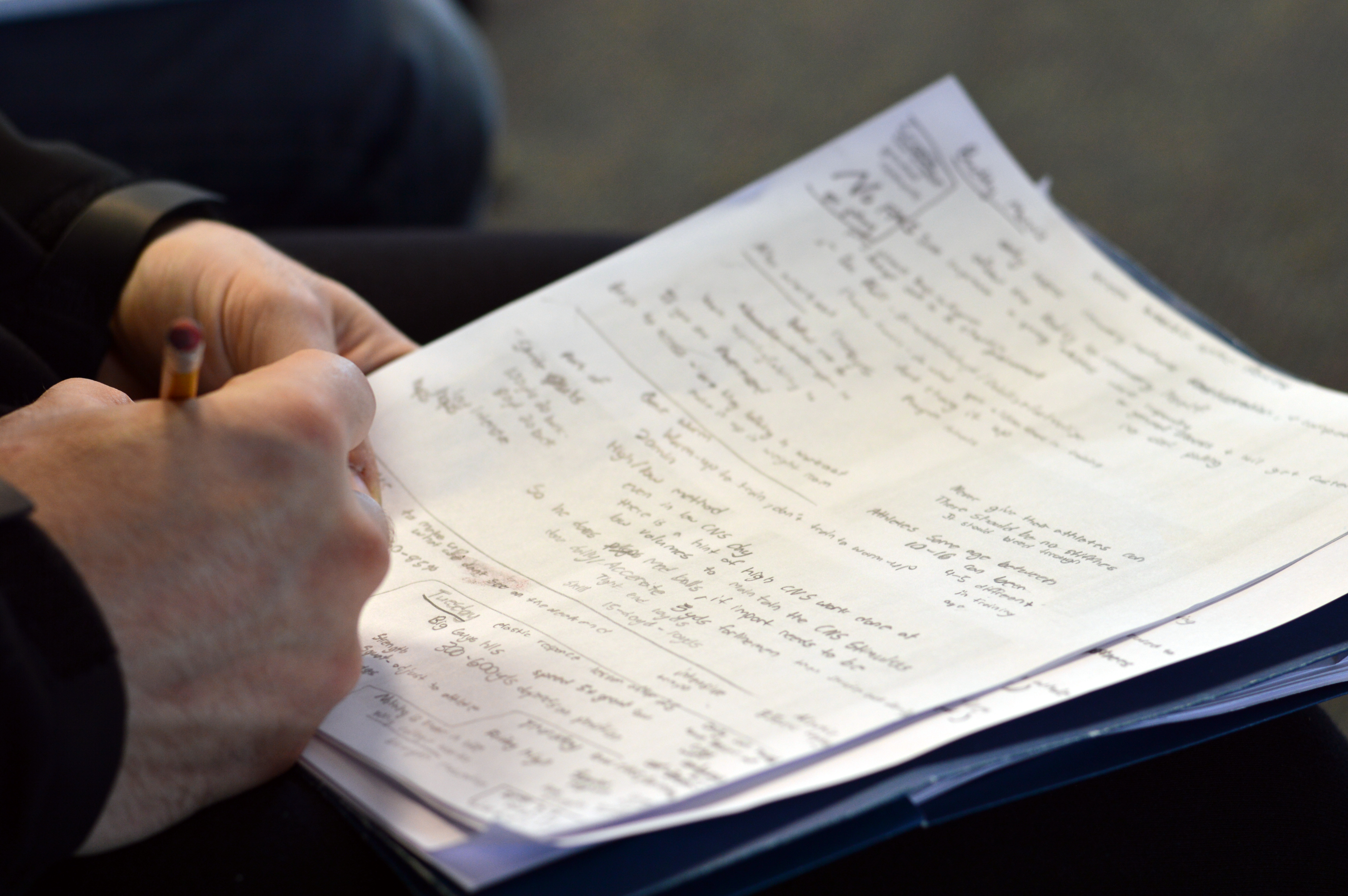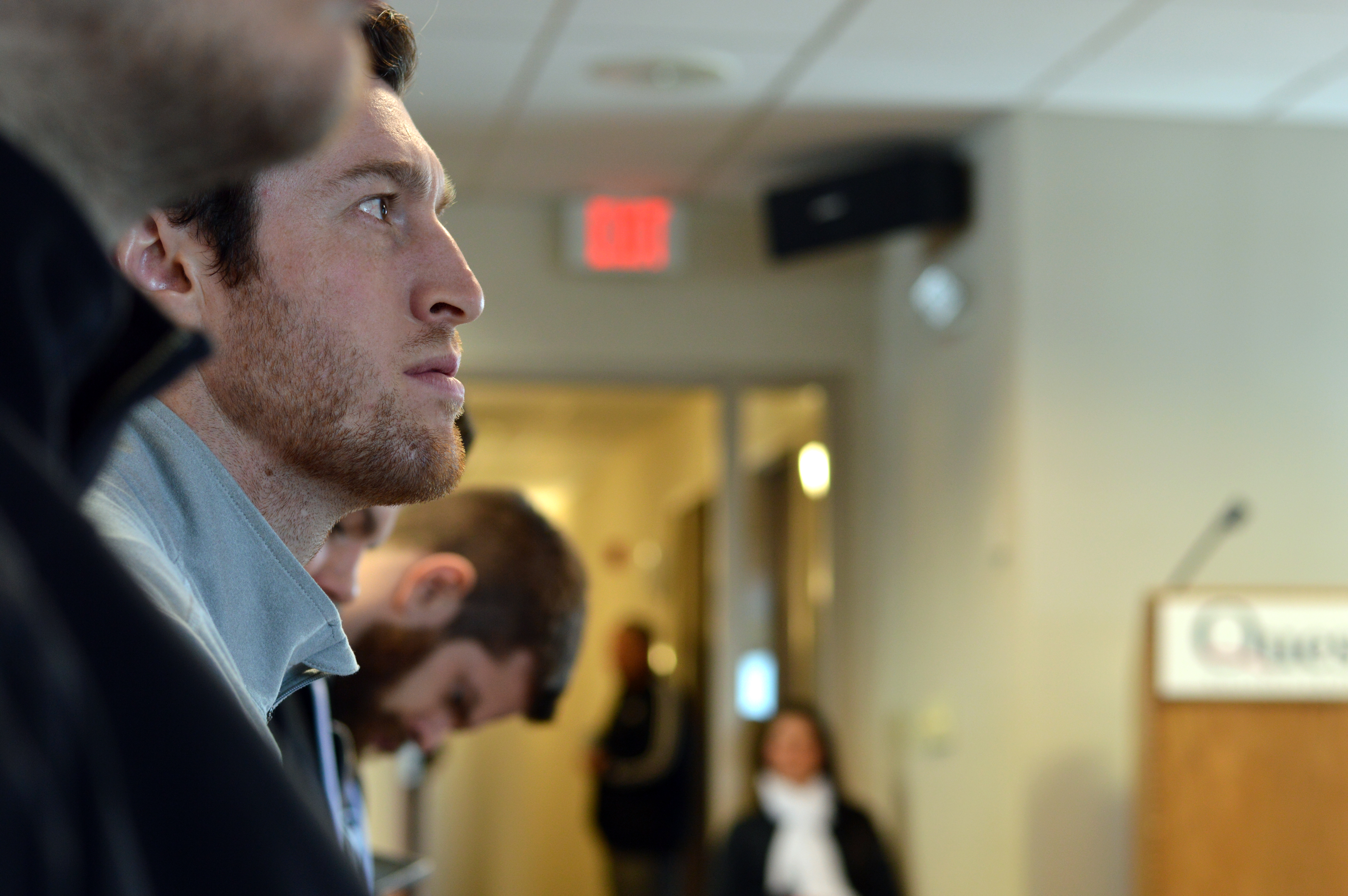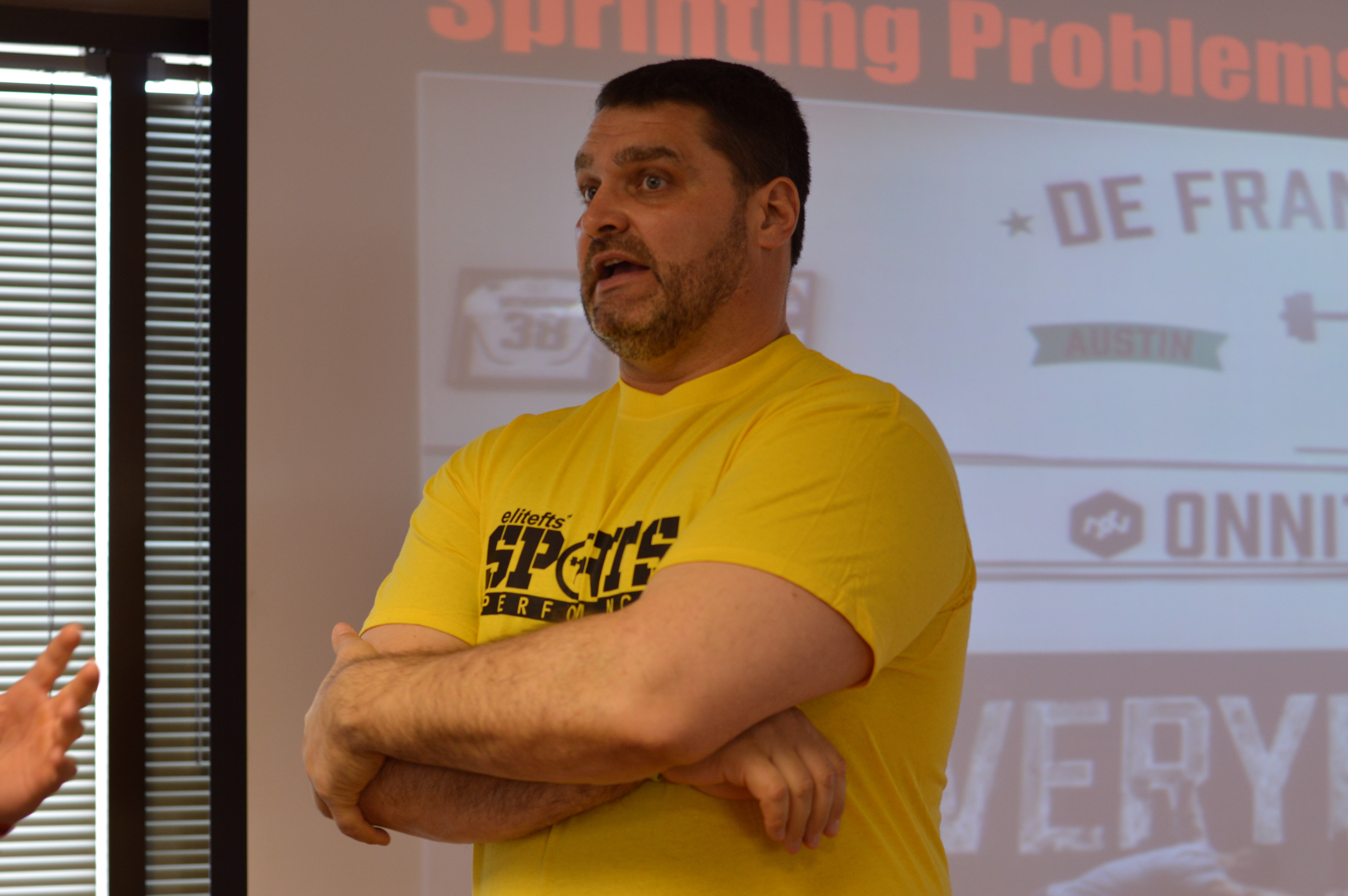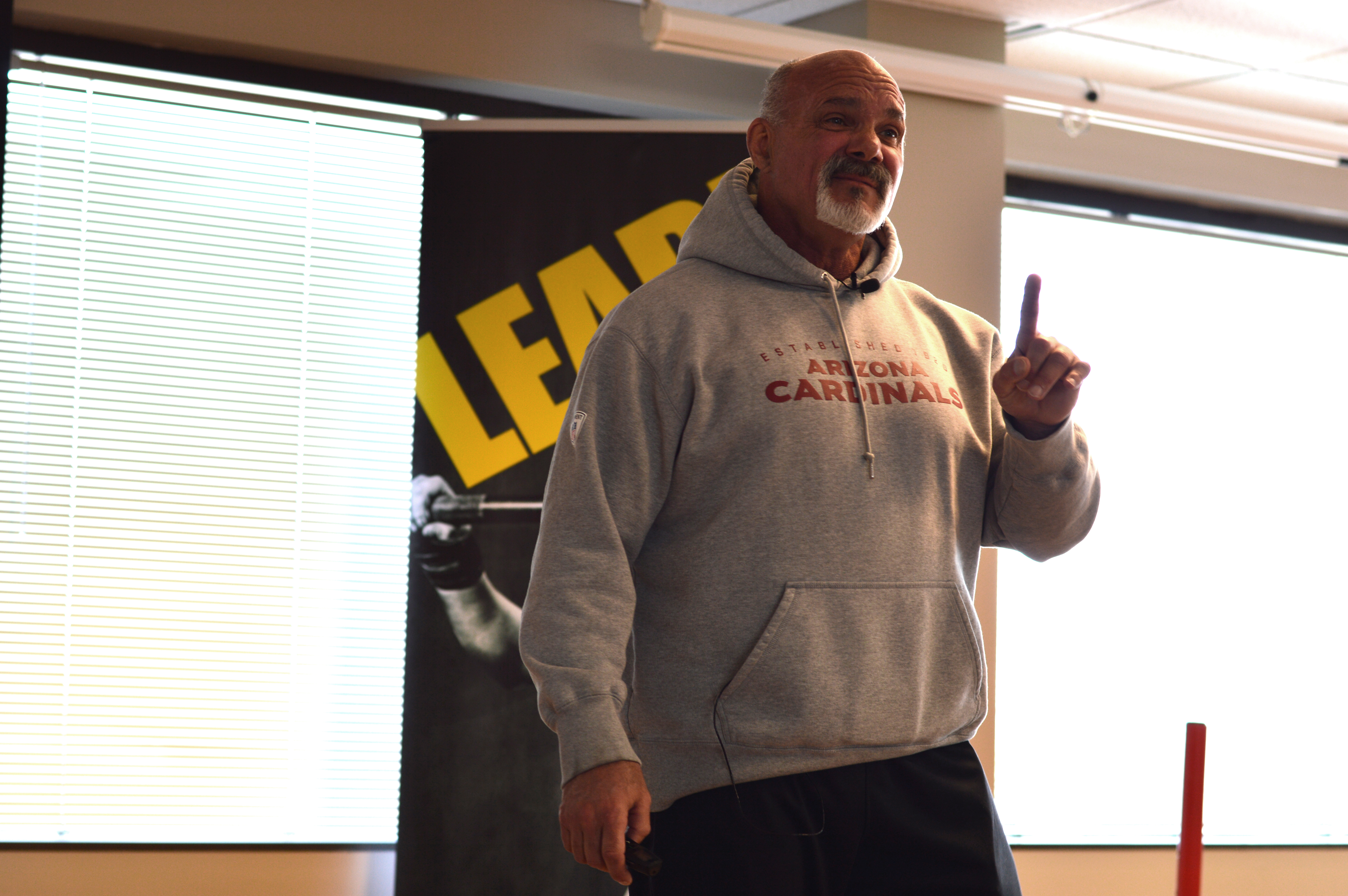
This article was originally written in 2007 and published on the sportsperformancecoach.com website, which I believe is now defunct. I've taken this out and reexamined it to see how I’ve changed since then.
A rough translation of bushido, the way of the warrior, is that the path to enlightenment comes when no way is way, when no method is method. This is the story of my path of bushido.
I began training at the tender age of twelve. I started without any knowledge whatsoever, just the booklet that came in my DP Weightlifting set. So I followed it to a T and then I understood training in some respect. I made some good gains, and people would come and ask me about training in my junior high school. My first presentation that I gave on strength training was actually in seventh grade English class when we had to talk about our hobby and bring in a demo. I brought in the 110-pound weight set and awed the class by bench pressing it.
I knew it all. My knowledge was complete. It was a circle. Anything someone asked me, I could go to my circle and figure it out.
Then came the dark years as I refer to them. This occurred from age 13–15. I found Muscle and Fiction and read it each month like a bible. I learned every Weider principle and could recite them verbatim (which isn't necessarily a bad thing...some of the principles are quite good, such as progressive overload). I read every article from all the bodybuilders and tried the workouts. Fortunately, I was doing these during puberty when testosterone was at a peak, so I could adapt somewhat. My circle had changed. It had an open corner. When I found out about this split training, my circle changed shape to contain this information. It no longer looked like a circle. It looked like a circle with a cone sticking out the top of it. It started to open up as I learned about different types of training, including German volume training and power factor training, outlined in this magazine. This circle was becoming more and more like a circle again only larger.
There were inadequacies though, so I went to the public library and Barnes & Noble to get all the books I could on training and bodybuilding. Books by Robert Kennedy, Arnold Schwarzenegger, Stuart McRobert, and ones I could nowhere near understand by Fred Hatfield. My circle was completely filled in.
I thought I knew it all now. As a sophomore at the tender age of fifteen, I was the strongest guy in school and an avid bodybuilding trainer. I was on AOL and the forums for bodybuilding, answering questions with the best of them. I thought I knew it all and so did many others. My football coaches would ask me about training programs and I would talk about the differences in programming, the Mentzer/Yates methodology, Tom Platz and his high reps.
I began training in a commercial gym in Springfield, Missouri, so that I could have access to the machines and get greater isolations of the muscle because that is how you get the greatest peaks. I talked to the biggest, strongest guys in the gym and they asked my advice because they thought that I was smart. They didn't have any clue that I was only fifteen. They thought I was twenty or so and a fairly good bodybuilder.
One Saturday, I was training early in the morning doing high rep squats with my toes turned in different ways to hit the different muscle groups. I was doing what was a significantly heavy weight for that time being 365 pounds. A middle-aged gentleman came up and asked me what I was doing with the different toe positions and why. I started talking about the different muscles used with the toe positions and my aspirations of being a bodybuilder. He then ripped me and my plan apart. He told me that with my hip width and thick waist, I would never be able to be a bodybuilder or at least one that was any good. I looked at his jacket, which said American Record Holder, 181-pound weight class, and thought, "Well hell, maybe this guy knows something."
I knew it all. My knowledge was complete. It was a circle. Anything someone asked me, I could go to my circle and figure it out.
That man happened to be Charlie McClaine. He brought me over to his house to teach me how to powerlift. He found the high school state meet coming up in six weeks and set me up with a plan to do it. There were low reps in the training, pauses. Technique work? What was that? It seemed archaic and went against everything that I knew at that point.
This was nowhere near inside my circle, but I did it anyways. I thought to myself, "People once thought the Earth was flat and would stone anyone who said otherwise and look what happened? The Earth was round."
I hated the training, the heavy lifting, the singles and doubles. There was little to no muscle pump. But in the end, it paid off at the Missouri State High School Championships on March 16, 1996. They say that you always remember your first and boys do I. I didn’t have the money to buy a suit or shirt, and I didn’t know anyone else my size to borrow one, so I competed “raw” in an equipment-friendly meet. I was the only one in the 242-pound weight class without a bench shirt, knee wraps, squat suits or a power belt. At the end of the day, I was the only one in my weight class with a gold medal around my neck.
My circle was growing by blowing up from what I knew. There weren't any borders, and information was flying everywhere. I had to get everything together. I started digesting Powerlifting USA on a monthly basis. It was much easier to read then Muscle & Fitness, being less than half of its size and 1/100th of the advertisements. I read every page at least twice and underlined and highlighted everything. I found something new and I wanted to know and understand everything.
Over the course of the next two years, I had become the national champion with the help of Rich Peters, Jim Duree, Dave “the Crusher” Kennedy and the Powerlifting USA magazines. I used to go to any website that I had heard about and try to emulate the training of Bill Kazmaier. I again had completed my circle and thought I knew everything. I was a master of progressive overload, the SAID principle and linear periodization. Everyone I talked to said not to read Louie Simmons articles, that they were a farce. His guys only got stronger from drugs and that was it. So I came to the conclusion that everything that was in my circle of knowledge was true and anything that wasn’t was a bunch of pooey. Regrettably, I had that thought process for a while, meaning that I thought what I knew was all there was and anything that challenged it was wrong.
Well, because I kept my Powerlifting USAs in the bathroom and I take long dumps, I would run out of articles to reread in Powerlifting USA, so I started reading Louie’s articles—the three strengths, the Soviet authors, the big lifts. I was curious.
I came into a volunteer position at the then Southwest Missouri State University under Coach Rick Perry. He was big into the conjugate and Louie and asked me if I knew about him when he was interviewing me. Fortunately, I had read a lot of Louie’s stuff and had played with some of the exercises.
So I came into my position with Rick and started working with sports. I had them do what I knew, which was straight powerlifting, old school dinosaur stuff. I was so proud because I felt that I knew it all and was going to get the greatest results ever with these athletes. I was an accomplished powerlifter and learned how to train myself and read everything that I could about training, so the program I made had to be good, right?
I started lifting with Rick and he followed the conjugate method. I hadn’t made gains in two years in my training (I was 22 and hadn’t made any gains since 20). I just figured I had hit my genetic potential. I was intrigued about Louie’s stuff, but I thought it had to be bunk. Over the course of the next year and a half, I put 175 pounds on my squat, 160 pounds on my bench and 55 pounds on my deadlift.
After the initial movement of my lifts going up, my circle had exploded. There is another way to do it? I was floored. This can’t be happening. It doesn’t go with my knowledge. I don’t understand it. I wanted to know more. Rick had a good library of books, many of which I had heard of through Louie’s articles, so I began reading. Zatsiorsky, Yesis, Siff, Kurz, Matveyev, Kreis, Medvedeyev, Verhkoshansky, Bompa. In the course of about six months, I had read them all. We made visits to Westside Barbell to meet with Louie Simmons, the Cleveland Browns to meet Buddy Morris and Tom Myslinski, and Texas to meet Jeff “Mad Dog” Madden. Each one of the people we visited taught us different things, all of which we used to improve our program through various means.
WATCH Joe Kenn's NFL Strength Coaching Guidance
I again had a complete circle and thought I knew it all. We would go and visit people and I understood everything they said. Not much of it was new. It was always an expansion of the circle, but the circle never broke. Nothing new ever came from it.
Everyone did the conjugate system, from freshman to seniors in all our sports. Don' be mistaken though—we did train them as athletes. We included total body movements and multi-planar movements, but most things were broken down into the dynamic effort, repetitive effort and max effort.
I had begun to hear about a new organization of training called the tier system. To complete my bachelor's degree, I had to do an internship in my field anyways, so I ended up going out to learn from Joe Kenn at Arizona State. Conveniently, I had family there that I could stay with, so I wouldn’t have to pay rent or anything. It became much more feasible. I had initially planned to go to Tennessee and learn more about Olympic lifting, but some things, such as a lack of money and a house fire, occurred, so I needed to go somewhere where I could save money and not pay rent.
During my short internship, I learned massive amounts about the system—how exercises were categorized, the science behind things, how to organize everything as an athletically based program. It was a systemized approach. With my current knowledge of myself through FIRO-B and Meyers-Briggs tests, I understand why I've been drawn to this approach. I loved the organization, and to this day, I'll still flip through my notes for a greater understanding of the system.
My time at Arizona State was cut short by a terminal illness in a family member, and I completed my internship at the University of Tulsa. Pat Ivey, who was the director there at the time, was kind enough to allow me to come in halfway through the summer. The one thing that I noticed there with Pat was how the athletes responded to him and how he treated his staff. His athletes worked hard because they wanted to work hard. I wanted to learn more, but my time was up there.
I returned to Southwest Missouri State University, this time as a graduate assistant in a position they created for me while I was doing my internships. I implemented what I had learned with my sports and helped others there to gain a greater understanding of the tier system. I implemented what I picked up from Pat with my sports and had a greater response from them.
We also started doing more things dealing with the autoregulation of training per Buddy Morris. We tried the APRE with great results. I had athletes who were doing six reps with their old one-rep maxes and some of those who were making the great gains were seniors. We saw great use and viability from the APRE and still use it today.
About seven months after I returned to Southwest Missouri State University, Pat Ivey got the job as the director of strength and conditioning at the University of Missouri. I went to the University of Missouri and started out as a graduate assistant. (As a matter of fact, I'm still there as a full-time staff member.) I learned how to deal with the athletes and was exposed to different things. It turned out to be a great growth opportunity for me personally because I had so many people to bounce ideas off of.
Autoregulation improved with more methods. We all read The Stress of Life by Hans Selye. This opened my eyes to stressors and how they work and affect the body. It is one of the greatest training books that has nothing to do with training. The circle expanded again with cones.
Dr. Rick McGuire, the track coach and one of the most well respected sports psychologists in the nation, taught me many things through his class and time spent in his office—the way to deal with athletes, how to respond, how to get them to respond, different tools for the toolbox. Everything was incredible. My circle again expanded with cones.
Every time a cone came up, I knew that there were gaps in my knowledge and I worked hard to fill them in. It became a game. I would sit and think, Google, think, Google, call and read to find out a way to fill in the gaps.
In the meantime, I learned why my body broke down from the early training and how cumulative effects occur. I learned how the athletes respond and why results differ from year to year.
Multi-year systems of training have finally come into effect with my sports. Sports psychology techniques are used at every opportunity. Autoregulatory training is highly used with great results in more methods than the APRE. Block training and retention times have come into play. Mobility work and joint integrity are used often. All things old and new have come into play.
The more I learned, the less I felt like I knew. I learned that when I thought I knew everything, I knew nothing.
Up until just a few years ago, I was of the mindset that Olympic lifts weren’t necessary in programming for athletes. They were too complex, they took too long to teach and they were just a general pain in the ass. They didn’t have a place in my circles of knowledge. Well, through my searching of the translated Soviet and German texts, I had an epiphany. Well, really two epiphanies. For one, strength-speed and speed-strength were separate traits and thus needed to be developed as such. The other epiphany is that the Olympic lifts weren't magic. They were simply an excellent way of training speed-strength. Olympic lifts were speed-strength by nature and, if trained properly, were a great variant in developing that trait.
In the last few years, I’ve learned that to truly understand what is going on in your program, you have to run statistical analysis. By using ANOVAs and regressions, you can see what had an impact on your program and what didn't. I often tell the story of how we came to use velocity-based training here at Missouri. (If you don’t know the story, you can find it in my Speed vs. Speed-Strength article). If you remember, it was a result of statistics. Simply looking and seeing numbers go up doesn’t tell you everything.
I’ve learned that what I used to think in regards to originality and science was way off. I used to think that I had some original ideas. Come to find out, I would read these same concepts, and sometimes things in their entirety, in a book written in the early 1900s (damn near a century ago). I also used to think that I was ahead of science. Now, I've learned that what was really going on back then was that I didn’t know how to use PubMed. I was just searching the wrong terms. I remember trying to figure out a quick way to hook a Tendo up to the guys and enter their body weight to see how much power output they have during a jump. I've found out now that all you have to do is have jump height and body weight and you can have their power through various equations.
For me, the process of learning was somewhat an oddity, although my friends had the same experience. The more I learned, the less I felt like I knew. I learned that when I thought I knew everything, I knew nothing. When I looked at everything like I knew nothing, I would understand it more fully. If I allowed observation without immediate analysis, I understood more, had a more complete approach, and learned more. In the Hagakure, another Samurai text, it states that the only mind is no mind and the only way is no way. This is the way of the warrior.
My learning experience taught me that I don’t know everything and shouldn’t feel like I do. When I thought I was an expert was when I didn’t know anything. Even though I may have a doctorate, I feel frustration on a daily basis for not knowing enough about what I want to know about. Not knowing what you don’t know is dangerous. Knowing what you don’t know is empowerment.
RELATED Buddy Morris: Back in the League
I was once told by current Arizona Cardinal’s head strength coach Buddy Morris that information in strength and conditioning doubles every eighteen months. I’m thinking that it may be doubling more rapidly now. There’s a lot that I don’t know. There’s a lot that I will never know. But I know that I don’t know. What was once a circle of knowledge for me has become a borderless plane, completely uncontainable. Age and education has taught me that you can’t write things in stone and have clear definitions about what is because things change with more information.
Just last year in 2013, human anatomy changed. Yes, you heard that correctly. Human anatomy changed. They discovered something called the anterolateral ligament in the knee. This wasn't a product of evolution but a product of more careful dissection. The ligament lies directly underneath the IT band and was most likely just dismissed as part of that. Now, those who were doing injury modeling may have to go back and account for something that was previously unknown.
The only known is that we don’t know everything. The best thing is to keep a beginner's mind. Remain constantly curious and try to learn everything. This way, you can become strong(er) of mind.















CJ- Here's an order of books that I recommend: Secrets of Soviets Sports Fitness by Yessis, he Strength coaches playbook by Joe Kenn, Science and Practice of Strength Training by Zatsiorsky, Secrets of Sports Training by Kurz, and then Supertraining by either Siff or Verkhoshansky. I've read the Siff version.
Some use Siff as a reference only, I have read through it twice and have picked up tremendous amounts from it. If i can ever find some time, I will read it again. It's a good order to ease you into it.
Which one would you recommend ?